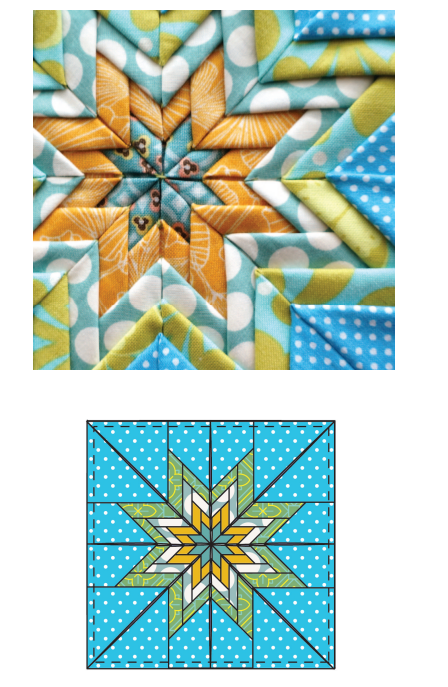Tips and Tricks
For quilters eager to try their hand at the Folded Star Pattern, here are a few tips to keep in mind:
Precision is Key: Take your time when folding and pressing the fabric to ensure accuracy and neatness in your final result.
Experiment with Fabrics: Don’t be afraid to mix and match fabrics to create visual interest and texture within your star pattern.
Practice Patience: Like any intricate quilting technique, mastering the Folded Star Pattern may require practice and perseverance. Embrace the process and enjoy the journey of creating something beautiful with your own hands.
Embrace Imperfections: Quilting is an art form, and handmade creations often bear the mark of the artist. Embrace imperfections as part of the charm of your quilt, knowing that each stitch tells a story.

Folded Star Pattern Diagram
Ready to embark on your quilting adventure? Dive into the enchanting world of the Folded Star Pattern with our complete guide, available for free below. Unleash your creativity and discover the joy of quilting as you master this timeless technique. Click the link to download the pattern and start stitching your masterpiece today! 🌟
FREE PDF HERE
The Folded Star Pattern stands as a testament to the time-honored tradition of quilting, showcasing the ingenuity and creativity of quilters through the ages. As we continue to explore the vast landscape of quilting wonders, let us draw inspiration from patterns like the Folded Star, celebrating their beauty and enduring appeal.
So, gather your fabric, thread your needle, and embark on a quilting journey filled with creativity and discovery. With the Folded Star Pattern as your guide, you’re sure to create quilts that inspire awe and admiration for generations to come.






